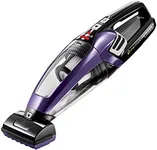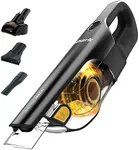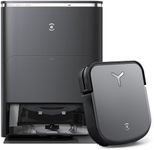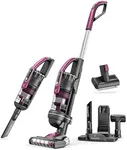Buying Guide for the Best Dog Vacuums
Choosing the right vacuum cleaner for a home with dogs can make a significant difference in maintaining cleanliness and managing pet hair. Dogs can shed a lot, and their fur can get embedded in carpets, furniture, and other surfaces. When selecting a vacuum cleaner, it's important to consider several key specifications that will ensure the vacuum is effective at picking up pet hair and dander, while also being easy to use and maintain.Suction PowerSuction power refers to the vacuum's ability to pull in dirt, debris, and pet hair. This is crucial for homes with dogs because pet hair can be stubborn and difficult to remove from carpets and upholstery. Higher suction power generally means better performance. For homes with heavy shedders, look for vacuums with strong suction capabilities. If your dog sheds less, a vacuum with moderate suction power may suffice.
Filtration SystemThe filtration system in a vacuum cleaner helps trap dust, dander, and allergens, preventing them from being released back into the air. This is especially important for households with pets, as pet dander can trigger allergies. HEPA (High-Efficiency Particulate Air) filters are highly effective and can capture tiny particles. If anyone in your home has allergies, a vacuum with a HEPA filter is a good choice. For general use, a vacuum with a good standard filter may be adequate.
Brush RollThe brush roll, or beater bar, is the part of the vacuum that agitates the carpet fibers to loosen dirt and hair. For homes with dogs, a vacuum with a motorized brush roll is ideal as it can more effectively lift pet hair from carpets. Some vacuums offer tangle-free brush rolls, which are designed to prevent hair from wrapping around the brush. If your dog has long hair, a tangle-free brush roll can save you a lot of maintenance time.
Attachments and ToolsAttachments and tools can enhance the versatility of your vacuum cleaner. Look for vacuums that come with pet-specific tools, such as a pet hair brush or upholstery tool. These attachments are designed to remove pet hair from furniture, stairs, and other hard-to-reach areas. If your dog spends a lot of time on the furniture, these tools can be very useful. For general cleaning, a vacuum with a few basic attachments may be sufficient.
Bagged vs. BaglessVacuums come in bagged and bagless models. Bagged vacuums use disposable bags to collect dirt and hair, which can be more hygienic and easier to dispose of. Bagless vacuums use a dustbin that needs to be emptied regularly. Bagged vacuums are often better for allergy sufferers, as they contain the dust and dander more effectively. Bagless vacuums can be more convenient and cost-effective, as you don't need to buy replacement bags. Consider your preference for convenience versus hygiene when making your choice.
Noise LevelThe noise level of a vacuum cleaner can be an important consideration, especially if your dog is sensitive to loud noises. Quieter vacuums can make the cleaning process less stressful for your pet. Noise levels are usually measured in decibels (dB). If your dog is easily frightened by loud sounds, look for vacuums that are specifically designed to operate quietly. For dogs that are not as sensitive, the noise level may be less of a concern.
Weight and ManeuverabilityThe weight and maneuverability of a vacuum cleaner affect how easy it is to use, especially if you need to carry it up and down stairs or navigate around furniture. Lighter vacuums are easier to handle and can reduce strain during cleaning. If you have a large home or multiple floors, a lightweight and highly maneuverable vacuum can make cleaning more efficient. For smaller homes or single-story living, weight may be less of an issue.
























